
+91 8095511877

+91 8095511877
Rheumatoid arthritis (RA) is an autoimmune disease that affects the joints in the body. It is one of the most common illnesses in the world. Women seem to be affected more than men.
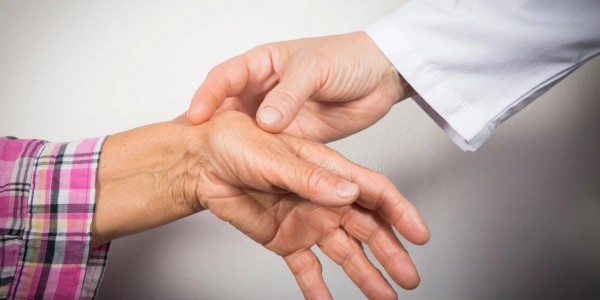
Even though there is no total cure, Ayurvedic treatment for RA works well in most cases."Ama Vata" is the name for RA in Ayurveda. The treatment starts with fasting, then an enema (Vasti), pouring medicinal oils over the head (Dhara), and medicated massages (Kizhi).
You will need to be in the hospital for 21-28 days for the treatment.
In an autoimmune disease, the body's immune system fights the body's own tissues. They attack some healthy tissues in our cells because they think they are foreign tissues.
In RA, it attacks the synovium tissue, which is inside the joint linings. The job of this tissue is to keep the joints moving smoothly. So when this tissue is under attack, there will be less lubrication. This will affect how the joints move. It also makes the joints swell, which hurts and makes them stiff.
This swelling wears down the cartilage. Cartilage is a smooth elastic tissue that covers the ends of bones and keeps them safe. When cartilage breaks down, the space between the bones gets smaller. The bones start rubbing against each other and may even move out of place.
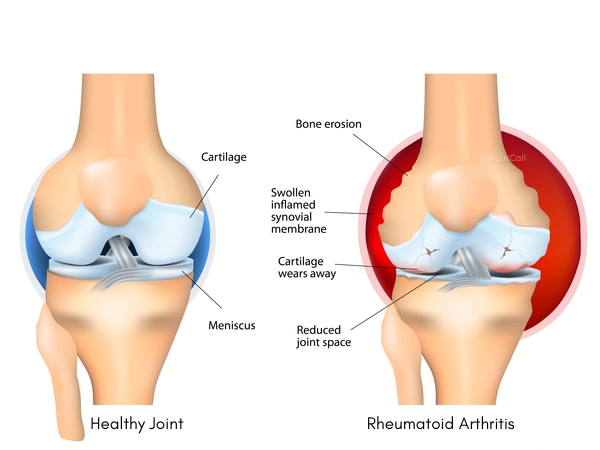
Because RA is a systemic disease, it affects the whole body. So, early treatment and evaluation are very important. Any delay can hurt the joints in a way beyond fixing.
The disease affects the hands, knees, ankles, wrists, feet, and elbows. Rheumatoid arthritis tends to affect both sides of a joint, so if one side is affected, the other side will soon be affected as well.
Some factors increase the risk, such as
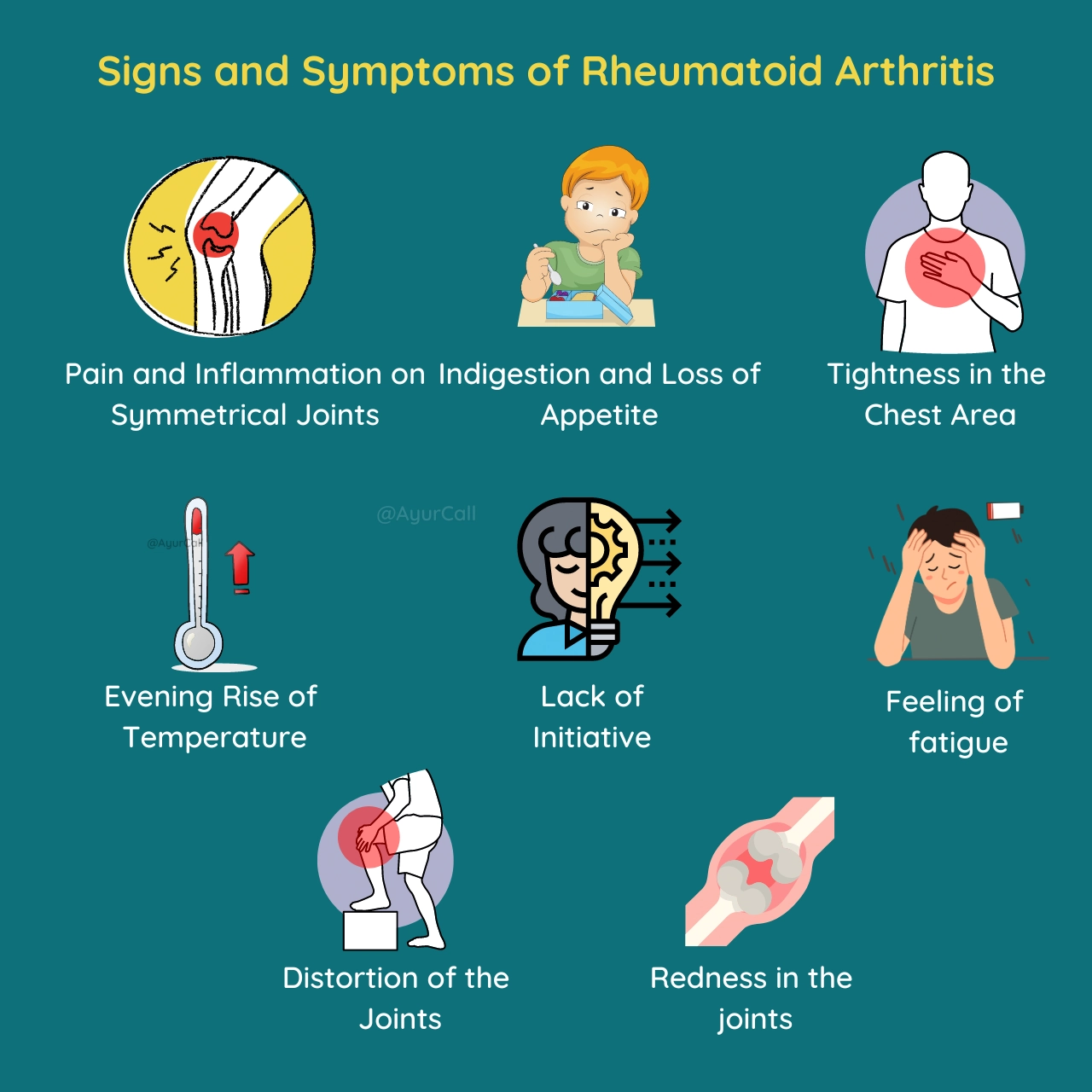
RA signs can be different for each person. Here are some of the most common signs:
Stiffness: Moving your joints, especially first thing in the morning, will be hard.
Swelling: There may be swelling in the joints
Joint pain: When there is inflammation in the joint, it hurts even when you are not moving it.
Redness in the joints: The joints get hot, sore, and red.
Besides these, you might also have a fever, feel tired, lose your appetite, or feel sad.
Even though RA is a progressive disease, it doesn't progress the same way in all people. There are four main stages.
Stage 1: This is the first stage when the lining inside the joint starts to swell. It gets painful and stiff.
Stage 2: The damage to the cartilage is getting worse, but it's still not too bad. Joints can't move as freely as they used to and hurt a lot.
Stage 3: The damage from RA is now so bad that it has spread to the bones. Soon, the bones may start to change shape.
Stage 4: This is the last stage, and at this point, the joints will no longer work. Bones may start to fuse together.
RA is hard to spot because many of its signs are the same as other diseases. Doctors look at the joints to see if they are swollen, stiff, or red. You'll need to get blood tests to check for the following:
Doctors may want X-rays and MRIs so they can see the joints clearly

Ayurveda says we all have three types of forces, or doshas: Vata, Pitta, and Kapha. When the doshas are in balance, you will be healthy. If there is any imbalance, we get sick.
RA is mainly a problem of the Vata. But Pitta and Kapha are also important.
Pitta, or the fire element, controls how the body breaks down food and uses energy. Lifestyle changes and wrong food choices lead to poor digestion. It causes Pitta to go out of balance. The body doesn't break down food correctly, and waste doesn't leave the body the right way. This waste or toxins in the body is known as Ama.
Vata is in charge of how the body moves air and moves blood. Lifestyle changes, stress, and other things can throw the Vata out of balance. This slows down the flow of blood and even stops Pitta and Kapha doshas from doing their jobs.
Vata carries the waste (Ama) through the blood also, along with nutrients. This waste causes Ama to build up in the joints, which makes them swell. Kapha dosha is in charge of keeping tissues lubricated. When Kapha is also out of balance, it mixes with Ama, making the joints hurt even more. So, all three doshas worsen RA symptoms in the body.

How you treat RA with Ayurvedic medicine depends on your body type. The Ayurveda doctor will find out which dosha is your main one during your first visit. The doctor may also ask about your family history and lifestyle during this time.
Diet is an important part of the treatment and will be as per your primary dosha type. The first set of treatments prepares the body for more thorough procedures that follow. These are Dhara (pouring of warm medicinal liquid over the head) and Kizhis (warm herbal massages) like Podikkizhi and Elakizhi.
Next are the cleansing procedures, such as Virechana (induced purging), Vasti (Medical enema), and Nasyam (medicines through the nose). These treatments help lessen pain and swelling in the joints.
The final steps are Dhara, Kizhi, and Vasti. They strengthen the muscles and make the joints work better.
Ayurvedic treatment for RA also involves yoga, meditation, and diet changes. With Ayurvedic treatment and medicines, pain, inflammation, and stiffness can get better.
There is no complete cure for RA in any medicine. The first step is to take painkillers and antibiotics to keep the pain and swelling under control. In many cases, the only choice is to have surgery to replace a joint.
In many cases, RA can lead to other issues like
Osteoporosis: Rheumatoid arthritis can make bones weaker. Also, some medicines make the bones thinner and more fragile.
Rheumatoid nodules: About a quarter of people with RA develop these nodules. These are hard lumps of tissue under the skin, often under damaged joints.
Infections: Many of the medicines are immunosuppressant drugs. While they indeed slow the progression of RA, it makes your immune system weak. Thus the body becomes prone to infections.
Heart and Lung problems: Rheumatoid Arthritis can cause blocked arteries, scars in lung tissues, and inflammations around the heart and lungs. These are mainly due to the side effects of the medicines.
Lymphoma: Patients who have severe RA are high-risk candidates for lymphoma
Even though there is no safe way to stop RA, taking these steps can lower your risk.
Some of the best hospitals for treating Rheumatoid Arthritis are
Please get in touch with us to get a free treatment plan from these hospitals. Please do share blood test reports and other latest medical records. This will help the doctors know your condition better and thus give the right plan for your treatment.
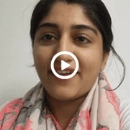
Himali Duggal
India
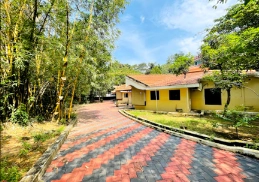
Vaidyaratnam Mooss Ayurveda
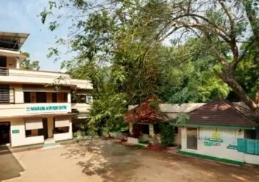
Nagarjuna Ayurveda
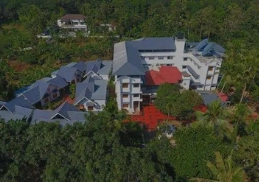
Rasayana Ayurveda
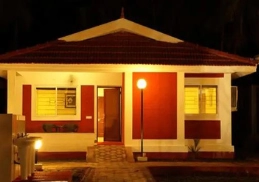
AVN Arogya

Ayurvaid

Samwarthika Ayurdhama
Frequently Asked Questions
Can Ayurveda treat Rheumatoid Arthritis?
How much will be the cost of Ayurvedic treatment for Rheumatoid Arthritis (RA)?
What are the treatment options available for Rheumatoid Arthritis in India?